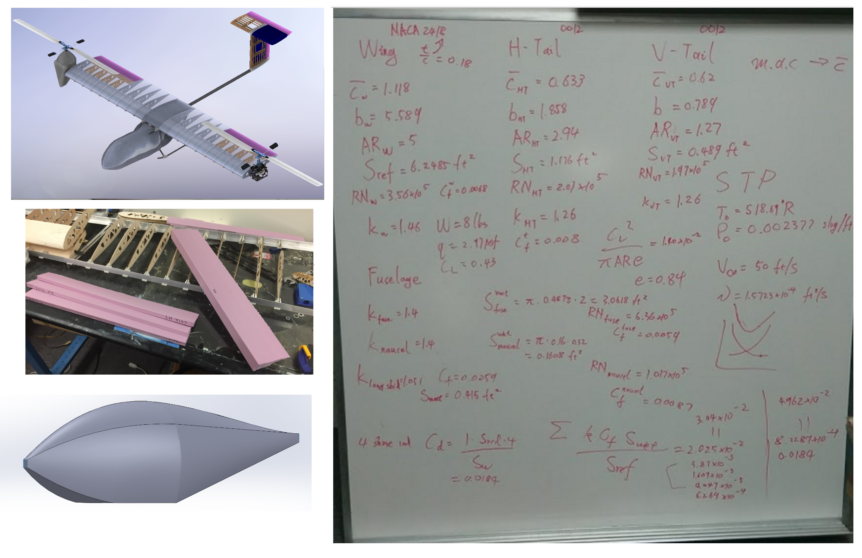Propulsion team has calculated the drag coefficients on each of the plane’s components. Using a mathematical model, the drag build up at sea level with a wind velocity (from infinity) of 50 ft/s. The team found that the landing skids produce the most drag compared to the wings, horizontal tail, vertical tail, fuselage, and naucelle. The Parasitic Drag Coefficient tested without landing skids was 3.04E-2, while testing with landing skids produced 8.01E-2, and the induced drag was 1.40E-2. The team will brainstorm a solution for reducing the drag on the landing gear.
The Mechanical Design team are working on streamlining the fuselage design. They have finished making the threaded components for securing the wing spar to the frame. The plane’s frame is now ready for FEA.
The Fabrication team has cut out the rest of the foam control surfaces and laser-cut most of the airfoils. They are now working on the wet composite lay ups on the control surfaces. They are using resources from Rapid Tech and Fab Works, depending on the equipment availability.
Then, Ground Station has organized their product timeline on GitHub. For the GUI, they have finished the TableWidget, have prototyped the GraphWidget, and planned changes for the DigitalClock and StatusIndicator functions. For next week, they will integrate the database code to the load and save data.
The Avionics team have encountered an issue with a dependency issue in the PX4 Flight Stack controller. The PX4 can’t function due to a Python interpolartory library that Windows 10 doesn’t have or recognize. Next, they have a tentative electronics layout for the plane’s wings with using two modular connectors (one for power, one for data streaming) and they will begin soldering it.

